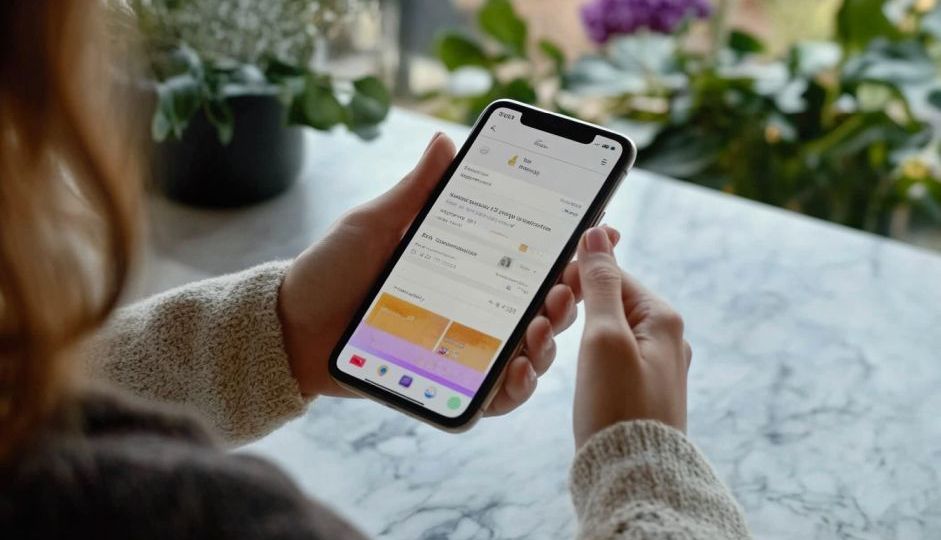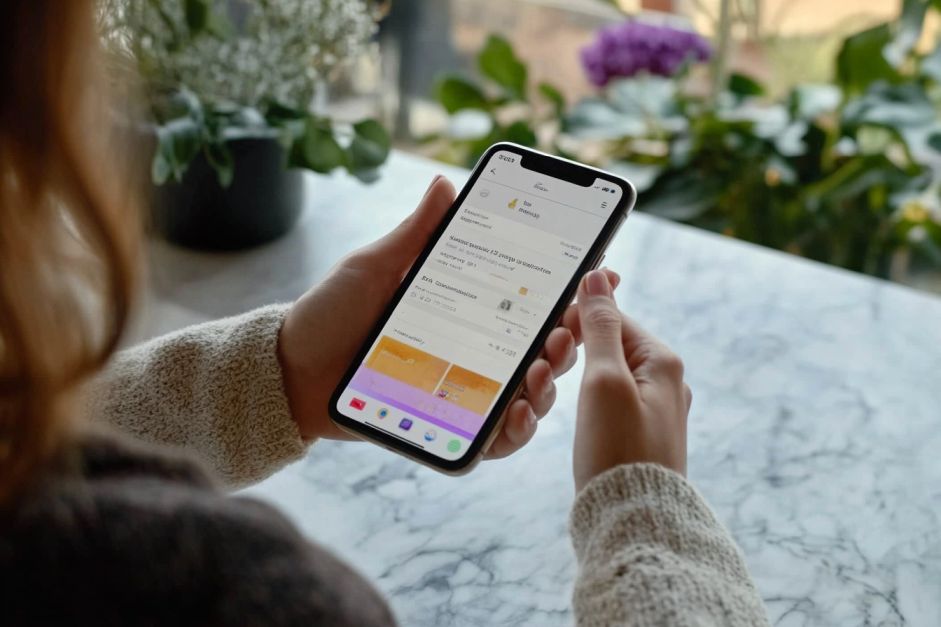

Have you used a mobile app to learn a foreign language? A few years ago, language learning meant thick textbooks, long lessons, and repetitive exercises. Today, all you need is your smartphone. You can learn whenever you have a spare moment.
Foreign language skills are more important now than they were 20 years ago. The world has become a global village. Kids start learning at a young age, and adults now have the chance to catch up in a much easier way. Does technology support language learning? Find out for yourself!
Spis treści:
Traditional language learning methods
Not long ago, learning a target language meant attending regular school classes or taking extracurricular courses. Anyone wanting to master English, German, or Spanish had to invest time in meeting with language educators and fellow students.
Lessons relied heavily on textbooks and workbooks. Occasionally, teachers brought extra materials like magazines. While these books were packed with knowledge, they did not engage students as modern tools do. Often, they contained outdated information and phrases you would never hear from native speakers.
Teachers had limited time for each student, and there was little flexibility. You had to stick to a fixed schedule. Classes were usually held only in the afternoons.
Early technologies helping language learners
Technology slowly entered language education in the second half of the 20th century. The introduction of tape recorders and audio cassettes allowed students to practice speaking with the right pronunciation and listen to native speakers at home. This was a significant step forward, as learners could now study independently.
The next big leap came with CDs enhancing language learning. They offered better sound quality and often included interactive exercises. At the turn of the century, the first computer programs that provided interactive lessons appeared. They featured animations, recordings, and quizzes. Learning became more engaging for students eager for a bit of fun.
Modern language learning process
Today, mobile apps make learning possible anytime, anywhere. Algorithms tailor content to each user’s level, track progress, and encourage regular sessions. Points, leaderboards, and daily challenges make learning almost addictive.
Online learning platforms offer access to advanced language courses. They are often led by prestigious universities. These courses, apart from language structure, also introduce aspects of the country’s culture.
Learning can be done remotely with learning platforms. Everyone can learn on their own terms at a convenient time. You can join live classes, study in groups, and access a rich library of educational materials.
Technology has significantly boosted motivation in language learning. New programs track your progress and show how well you are handling the material. Each completed lesson and correctly performed exercise is recorded. You can see your achievements through charts and statistics. This way, it is easier to identify your strengths and weaknesses.
Some people learn faster, while others take their time. Technology finely tunes the learning process to suit each user’s pace. Language apps usually start with a placement test, and based on the results and ongoing progress, the program adjusts the material.
Many apps also let you set goals. You can choose to learn a certain number of words daily or spend a specific amount of time on study. Personalisation extends to choosing topics of interest.
Language apps offer various forms of real time feedback. You might receive a simple error message or a detailed explanation of why an answer was wrong. This instant feedback helps you learn from your mistakes before they become habits.
Thanks to technology, language learning is more accessible than ever. While traditional group classes still have value, combining them with modern tools yields the best results.



Mobile apps in language learning
People love convenience. With a smartphone always at hand, language learning apps let you study anytime, anywhere, whether on your commute or during a coffee break. You can access many apps for free or purchase affordable premium versions.
AI-based algorithms track your progress and analyse your mistakes. They adjust the difficulty level to your abilities. If you are struggling with a particular grammar point, the app will suggest extra exercises on that topic. This will save you from wasting time on material you have already mastered.
Each lesson offers a chance to earn points. Badges and leaderboards add a competitive edge. Daily challenges like logging in and completing tasks motivate users to keep learning. The system makes studying feel like a game you are eager to play.
Learning sessions last just 10–15 minutes a day. This is short enough to avoid burnout, but long enough to pick up new vocabulary. Small chunks of knowledge are easier to absorb and review. Instead of forcing yourself through long sessions, you learn gradually.
Natural language processing: The role of AI in language learning
Learning languages has become even easier with the rise of artificial intelligence. Google Translate can translate entire sentences while preserving their meaning. The tool will help you understand difficult book passages and learn new words by comparing full sentences.
AI also helps improve pronunciation. It can detect subtle differences in accents, intonation, and articulation, giving you a more precise learning experience. ELSA Speak and Rosetta Stone analyse user recordings and compare them to native speakers. These features provide immediate feedback, so you know exactly what needs improvement.
Interaction with native speakers
It is no secret that social media connects you with people from all over the world. So why would you not use it to learn a language?
You can chat with someone from Spain, France, or Japan, learning the language in a truly authentic way. Users on these platforms often pair up. You can help someone learn English while you pick up Spanish, for instance. These interactions are far more valuable than learning from a book, as you pick up real-life expressions, idioms, and everyday slang.
Online communities are an incredible resource for language learners. Discussion groups allow you to ask questions and find materials that make language learning easier.
YouTube is a treasure trove of educational content. You will find channels teaching grammar, vlogs by native speakers, and lessons in video format.



Risks of technology in language learning
Technology provides vast resources for language learning. Unfortunately, it is easy to fall into the trap of information overload. Using multiple apps at once can leave you feeling overwhelmed by the sheer volume of available material.
Jumping between apps, YouTube videos, podcasts, and online lessons scatters your focus. Instead of absorbing knowledge, you might find yourself skimming through content without deepening your skills. To avoid this, prepare a clear plan of action.
Learning English and other languages using modern technology
We know how to tailor language learning to each student’s needs. Motivation and the right educational materials are key to successful learning. The best language courses blend modern technology with traditional methods. And that is precisely what we offer!
Each language course is carefully designed to suit your learning style. You will engage in interactive exercises and conversations with native speakers. You can also try online learning! Are you ready to meet in the classroom? Take the first step. Ask about available spots today.

